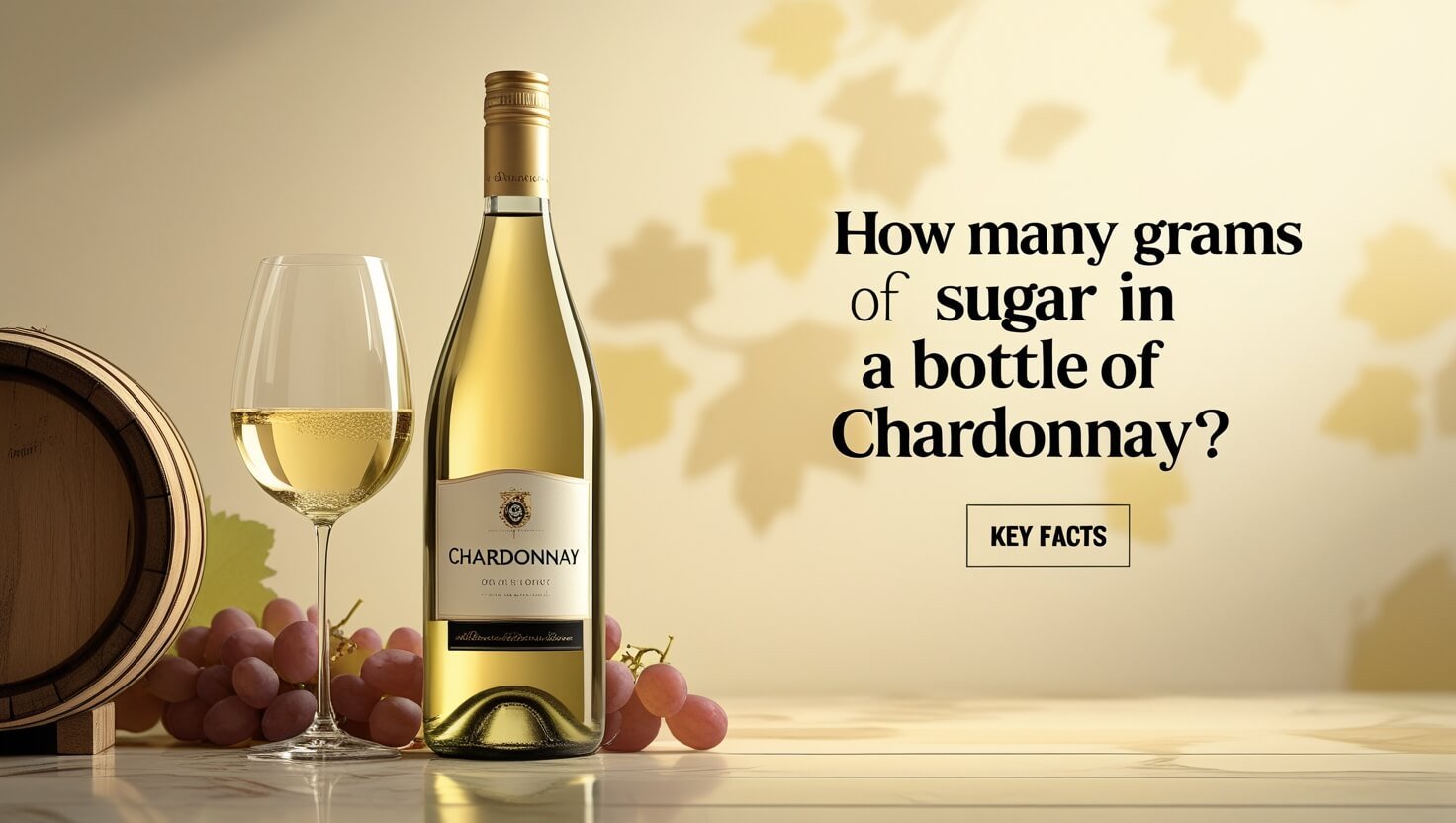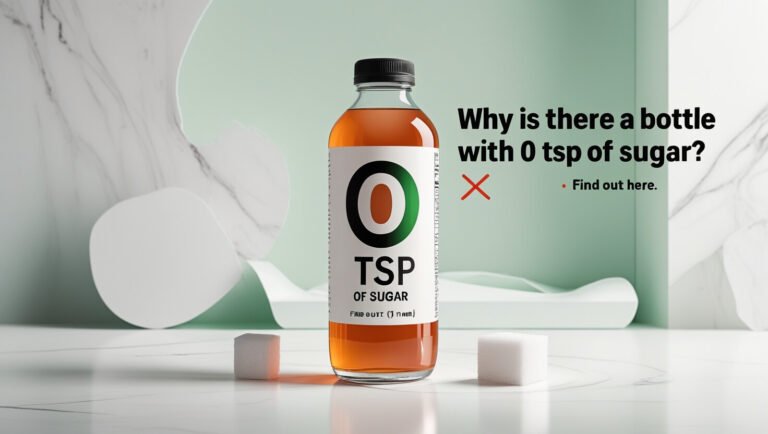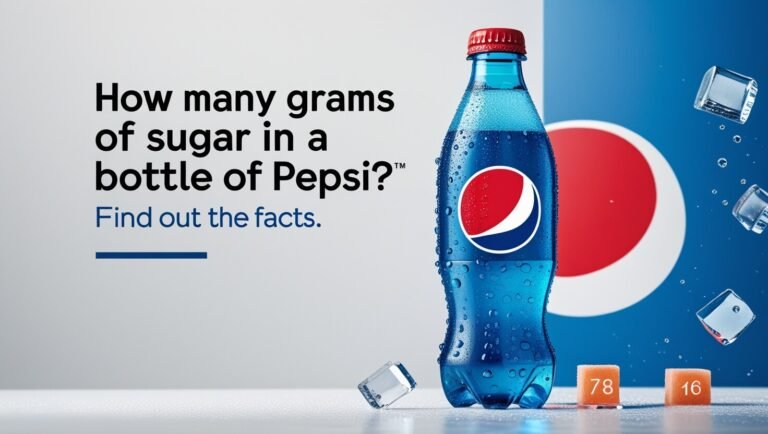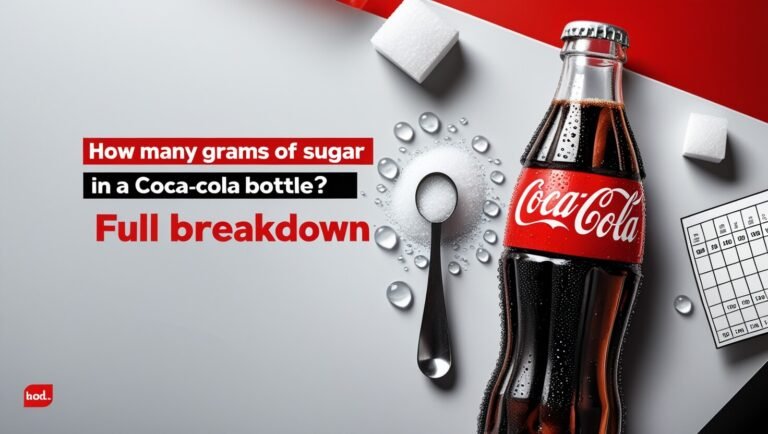How Many Grams of Sugar in a Bottle of Chardonnay?: Key Facts

Wine lovers are now checking the sugar in their Chardonnay. A typical bottle of Chardonnay has 635 calories. But how much sugar does it have?
To find out, we look at the sugar in Chardonnay. A standard 750ml bottle has about 4.5g of sugar. This is based on 0.9g of sugar per glass.
This makes us wonder about the sugar in Chardonnay. How does it compare to other wines? It’s important to know the sugar content in Chardonnay.
Sugar Content Basics in Wine Production
To understand Chardonnay’s sugar content, we need to know how wine is made. Grapes have natural sugars that turn into alcohol during fermentation. A typical Chardonnay serving has about 1.5 grams of sugar, which is quite low compared to other wines.
The amount of sugar in Chardonnay can change based on grape type and fermentation. Dry Chardonnays might have up to 10 grams of sugar per bottle. Sweet wines have much more. The sugar in Chardonnay can also differ based on the wine’s style and how it’s made.
Natural Sugar from Grapes
Grapes are the main source of sugar in wine. During fermentation, these sugars turn into alcohol, giving wine its unique taste. The sugar in grapes can change due to climate, soil, and grape type.
Fermentation Process Effects
The fermentation process greatly affects Chardonnay’s sugar content. The yeast used, fermentation temperature, and time can all impact sugar levels. Winemakers can adjust these factors to get the right sugar amount in each serving.
Residual Sugar Definition
Residual sugar is what’s left in wine after fermentation. It can be from 0 to 220 grams per liter, depending on the wine. Most dry Chardonnays have less than 10 grams of sugar per bottle.
| Wine Style | Residual Sugar (g/L) | Sugar Calories per Glass |
|---|---|---|
| Dry | 0-10 | 0-6 |
| Off-Dry | 10-20 | 6-21 |
| Sweet | 20-50 | 21-72 |
Different Types of Chardonnay Styles
Chardonnay is a versatile wine with many styles. Each style has its own unique characteristics. The style of the wine can affect the sugar content, as seen in chardonnay nutrition facts.
Oaked Chardonnays have a fuller-bodied flavor. Unoaked Chardonnays are often crisper and more citrusy.
Knowing about Chardonnay styles helps you choose better wines. Here are some key facts about Chardonnay styles and their impact on chardonnay sugar information:
- Oaked Chardonnay: fuller-bodied flavor, potentially higher sugar content
- Unoaked Chardonnay: crisper and more citrusy, potentially lower sugar content
Consider chardonnay nutrition and sugar content based on the wine style. Select one that suits your taste and dietary needs to enjoy it responsibly.
| Chardonnay Style | Sugar Content |
|---|---|
| Oaked Chardonnay | 2-4 grams per liter |
| Unoaked Chardonnay | 1-2 grams per liter |
How Many Grams of Sugar in a Bottle of Chardonnay
To find out how much sugar is in a bottle of Chardonnay, we must look at the type and its sugar level. The chardonnay sugar content changes based on how it’s made and the sugar left in the wine.
A typical bottle of Chardonnay has about 635 calories, mostly from alcohol. But, the sugar in how many grams of sugar in a bottle of Chardonnay can be between 1-5 grams per 5-ounce serving. This depends on if it’s dry or sweet.
Dry Chardonnay Sugar Measurements
Dry Chardonnay has less than 1 gram of sugar per serving. On the other hand, sweet Chardonnay can have up to 5 grams per 5-ounce serving.
Sweet Chardonnay Varieties
Sweet Chardonnay, with more residual sugar, tastes sweeter and has more calories. Always check the wine label or ask the winemaker for the exact chardonnay sugar content of a bottle.
Standard Serving Size Statistics
A standard Chardonnay serving is 5 ounces. It has 100-150 calories, depending on alcohol and how many grams of sugar in a bottle of Chardonnay. Here’s a comparison of calorie and sugar in different wines:
- Dry Chardonnay: 100-120 calories, 0-1 gram of sugar per 5-ounce serving
- Sweet Chardonnay: 120-150 calories, 1-5 grams of sugar per 5-ounce serving
Factors Affecting Chardonnay Sugar Levels
Several factors can change the sugar in Chardonnay, like climate, when grapes are picked, and how wine is made. The sugar level in Chardonnay is key to its taste and quality. For example, the sun’s rays can make grapes sweeter, like in California’s Central Valley.
When grapes are picked can also change the sugar level. Wines made later in the season are sweeter because grapes stay on the vine longer. Winemakers might add sugar to make the wine sweeter or more alcoholic.
Climate Impact
Cool places like Burgundy and Champagne make wines that are acidic and light. These wines have less sugar. But, warm places like Southern Italy and South Africa make wines that are full-bodied and sweeter.
Harvesting Time
When grapes are picked affects the wine’s sugar level. Wines picked early are more acidic and less sweet. But, wines picked later are sweeter because they have more sugar.
Winemaking Techniques
How wine is made can also change its sugar level. Oak aging and malolactic fermentation can make Chardonnay taste warmer and creamier. This can make it seem sweeter. On the other hand, wines not aged in oak are more acidic and taste brighter, like Pinot Grigio.
| Region | Climate | Chardonnay Sugar Level |
|---|---|---|
| Burgundy | Cool | Low |
| California | Warm | High |
| Champagne | Cool | Low |
Regional Variations in Sugar Content
Chardonnay sugar grams can change a lot based on where the grapes are grown. Cooler places like Tasmania have grapes with less sugar. In contrast, warmer areas like Hunter Valley have grapes with more sugar. This difference in sugar content changes how Chardonnay tastes, so it’s key to think about the region when picking a wine.
If you’re looking for chardonnay sugar information, remember that making wine can also cut down sugar. Wines that ferment longer tend to be drier and have less sugar left. Here’s a quick look at sugar levels in Chardonnay from different places:
- Cooler regions: 0.5-1 gram of sugar per 100 ml
- Warmer regions: 1-2 grams of sugar per 100 ml
- Low Sugar Chardonnay: under 1 gram per glass (less than 0.67 grams per 100 ml)
- Average Sugar Chardonnay: 1-2 grams per glass (about 0.67-1.33 grams per 100 ml)
- High Sugar Chardonnay: upwards of 2 grams per glass (more than 1.33 grams per 100 ml)
When looking at chardonnay sugar grams and chardonnay sugar information, remember the sugar content varies by region. Knowing these differences helps wine lovers choose a Chardonnay that fits their taste.
| Region | Sugar Content (grams per 100 ml) |
|---|---|
| Tasmania | 0.5-1 |
| Hunter Valley | 1-2 |
Caloric Impact of Sugar in Chardonnay
When looking at chardonnay nutrition facts, sugar content is key. A 5-ounce (150ml) glass of Chardonnay has about 123 calories. This is less than a pint of beer and more than a shot of vodka or rum.
The chardonnay sugar information helps us understand calories. Here are some important points:
- A 750ml bottle of Chardonnay has about 635 calories.
- There are about 3.2g of carbohydrates in a glass of Chardonnay.
- A glass of Chardonnay has about 1.4g of sugar.
Total Calorie Breakdown
Chardonnay calories can change based on type and size. Unoaked Chardonnay has less than 120 calories per 5-ounce serving. But, sweet or dessert wines can have up to 1,000 calories.
Carbohydrate Content
Chardonnay has about 3.2g of carbohydrates per glass. This is because fermentation turns most grape sugars into alcohol. But, the sugar left over can affect calories.
| Wine Type | Serving Size | Calories |
|---|---|---|
| Chardonnay | 5-ounce (150ml) | 123 |
| Chardonnay | 750ml bottle | 635 |
| Unoaked Chardonnay | 5-ounce (150ml) |
Understanding chardonnay nutrition and sugar content helps you make informed choices. Knowing the calories enhances your enjoyment of wine.
Reading Wine Labels for Sugar Content
Figuring out the chardonnay sugar content can be tricky. Wine labels rarely show sugar content. But, there are ways to guess the sugar in a chardonnay bottle.
To find out how many grams of sugar in a bottle of chardonnay, look at the label. Check the alcohol level. Wines with more alcohol usually have less sugar. Also, look at the wine’s style. Dry wines have less sugar than sweet ones.
| Wine Style | Sugar Content (grams per 5 oz serving) |
|---|---|
| Dry | |
| Off-dry | 1-5 |
| Sweet | 5-18 |
Knowing how chardonnay sugar content works and how to read labels helps you choose better wine. Whether you want a dry or sweet chardonnay, knowing the sugar content helps find the right one for you.
Sugar-Related Wine Terms and Measurements
Understanding the sugar content in Chardonnay is key. You need to know the terms and measurements used in wine. The sugar amount in Chardonnay can change a lot. This depends on how the wine is made and where the grapes come from.
The Brix scale measures the sugar in grapes. It helps figure out the wine’s alcohol and sweetness. Grapes can have sugar levels from 15 to 25 degrees Brix. Higher numbers mean more sugar.
Common Wine Label Terminology
Wine labels use special terms to talk about sugar content. You might see “dry,” “off-dry,” and “sweet.” These terms tell you how much sugar is left in the wine. Knowing these terms helps you pick a Chardonnay that tastes good to you.
| Term | Residual Sugar Level |
|---|---|
| Dry | Less than 1 gram per liter |
| Off-dry | 1-5 grams per liter |
| Sweet | More than 5 grams per liter |
Learning about sugar terms in wine helps you enjoy Chardonnay more. Whether you like dry or sweet Chardonnay, knowing the sugar content is important. It helps you find the perfect wine for your taste.
Let’s Wind UP
The sugar in Chardonnay can change a lot. This depends on the grape type, how it’s made, and where it’s from. Chardonnay usually has about 1.4 grams of sugar in a 5-ounce serving. Dry Chardonnay has less than 10 grams per liter, while sweet Chardonnay can have up to 120 grams per liter.
Knowing how much sugar is in your Chardonnay helps you choose better. It lets you enjoy this wine in the best way. Whether you like it dry or sweet, understanding the sugar content is key.
It’s important to match your Chardonnay with the right foods. This way, you can enjoy it without worrying about your diet. By checking wine labels and knowing the sugar levels, you can enjoy Chardonnay while staying healthy. Cheers to enjoying your Chardonnay with confidence!





